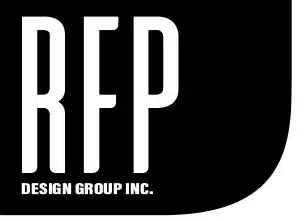Custom Store Display Fixtures
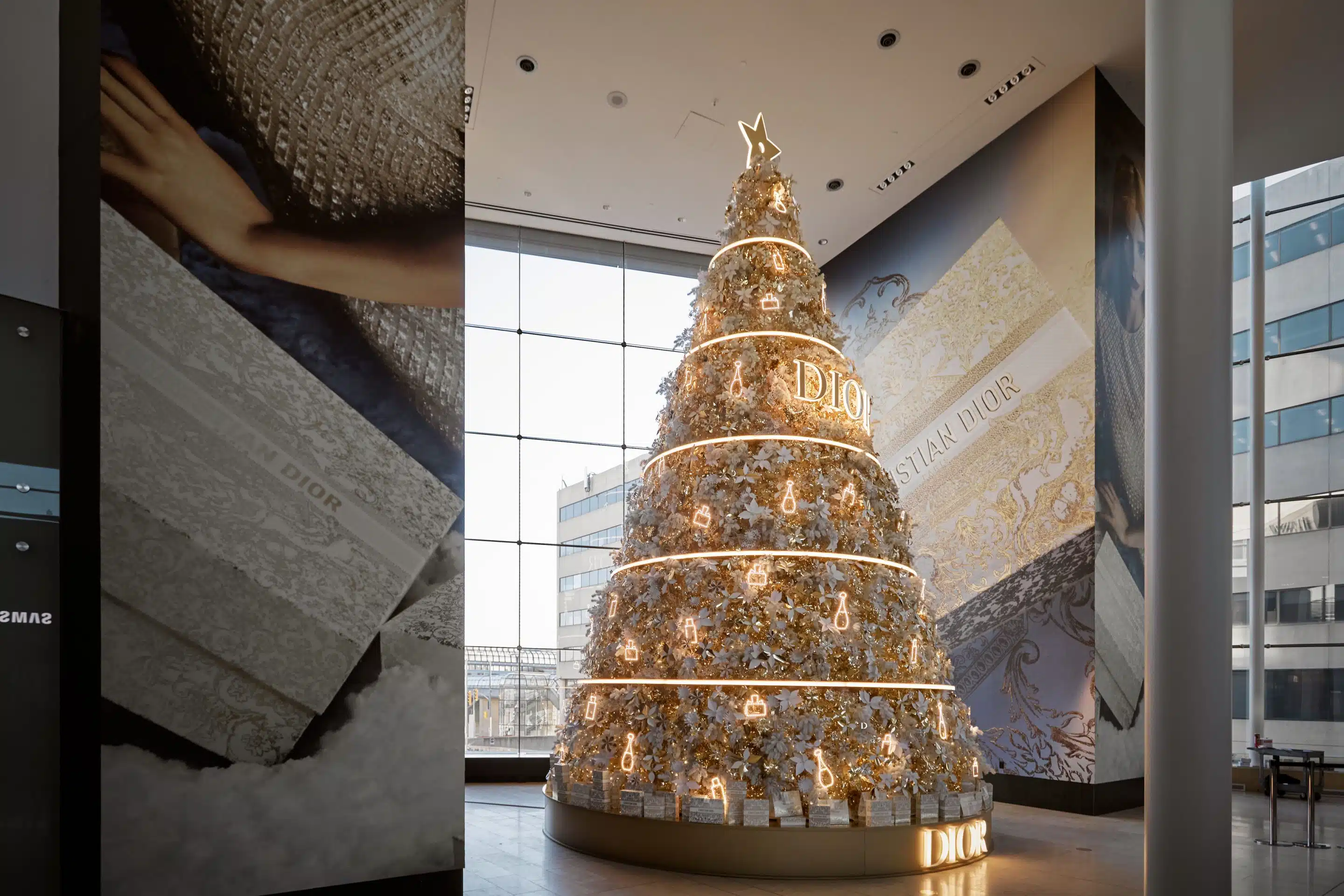
RFP DESIGN GROUP INC. specializes in providing top-quality design solutions tailored to meet the unique needs of our clients including custom store display fixtures. With our team of talented and experienced professionals, we offer a wide range of services that encompass all aspects of design, from concept development to final execution. Our expertise spans across various industries, including architecture, interior design, commercial, retail & showroom design. We take pride in our commitment to delivering exceptional custom store display fixtures while maintaining open lines of communication with our clients throughout the entire design process.
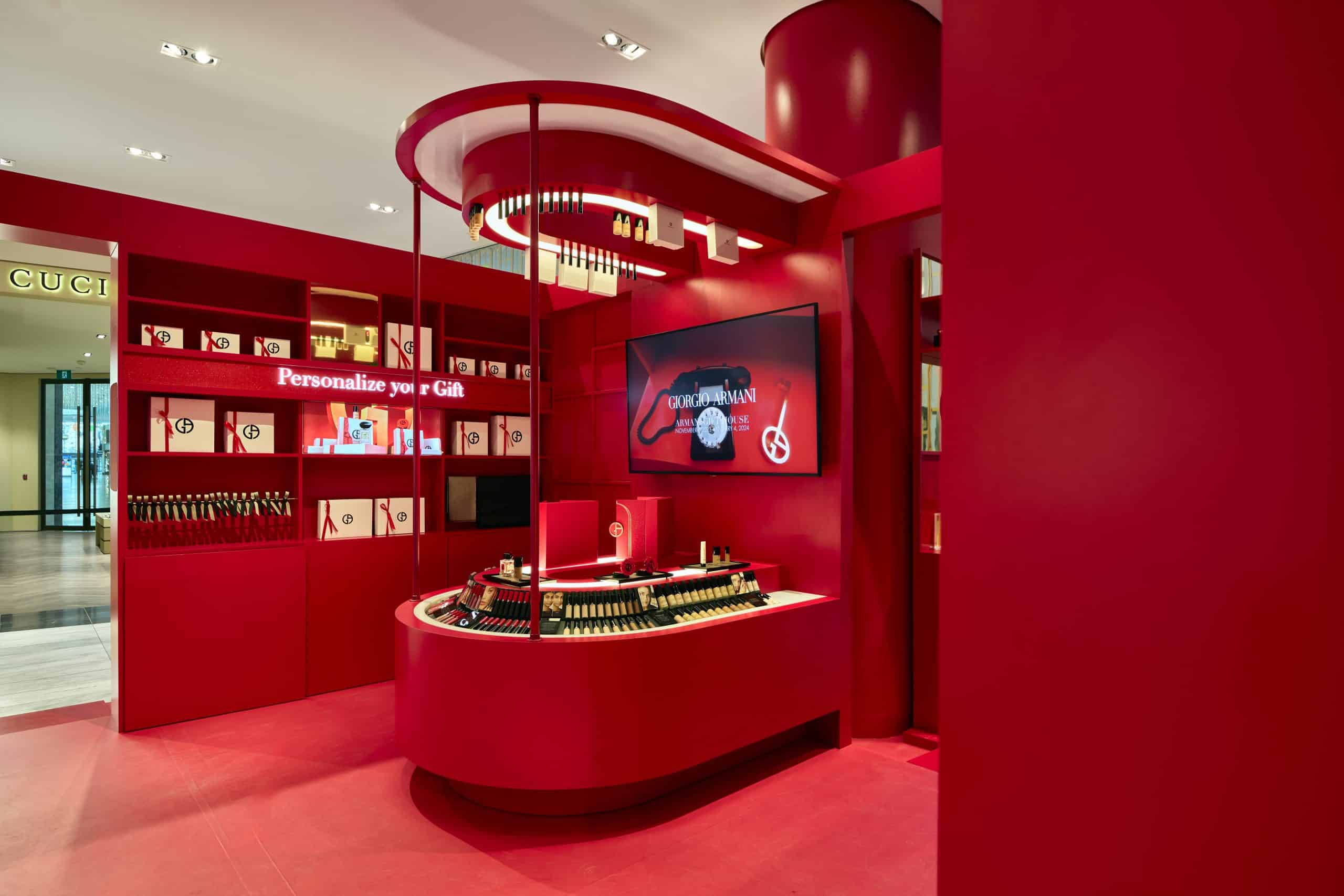
Store Fixtures
Store fixtures are the unsung heroes of any successful retail environment. These purpose-built elements are not just shelves and displays; they are the architects of your brand’s visual story. From wall-mounted shelving to eye-catching display cases, each fixture plays a crucial role in creating a seamless and engaging shopping experience for your customers. Contact us today for custom store display fixture solutions!
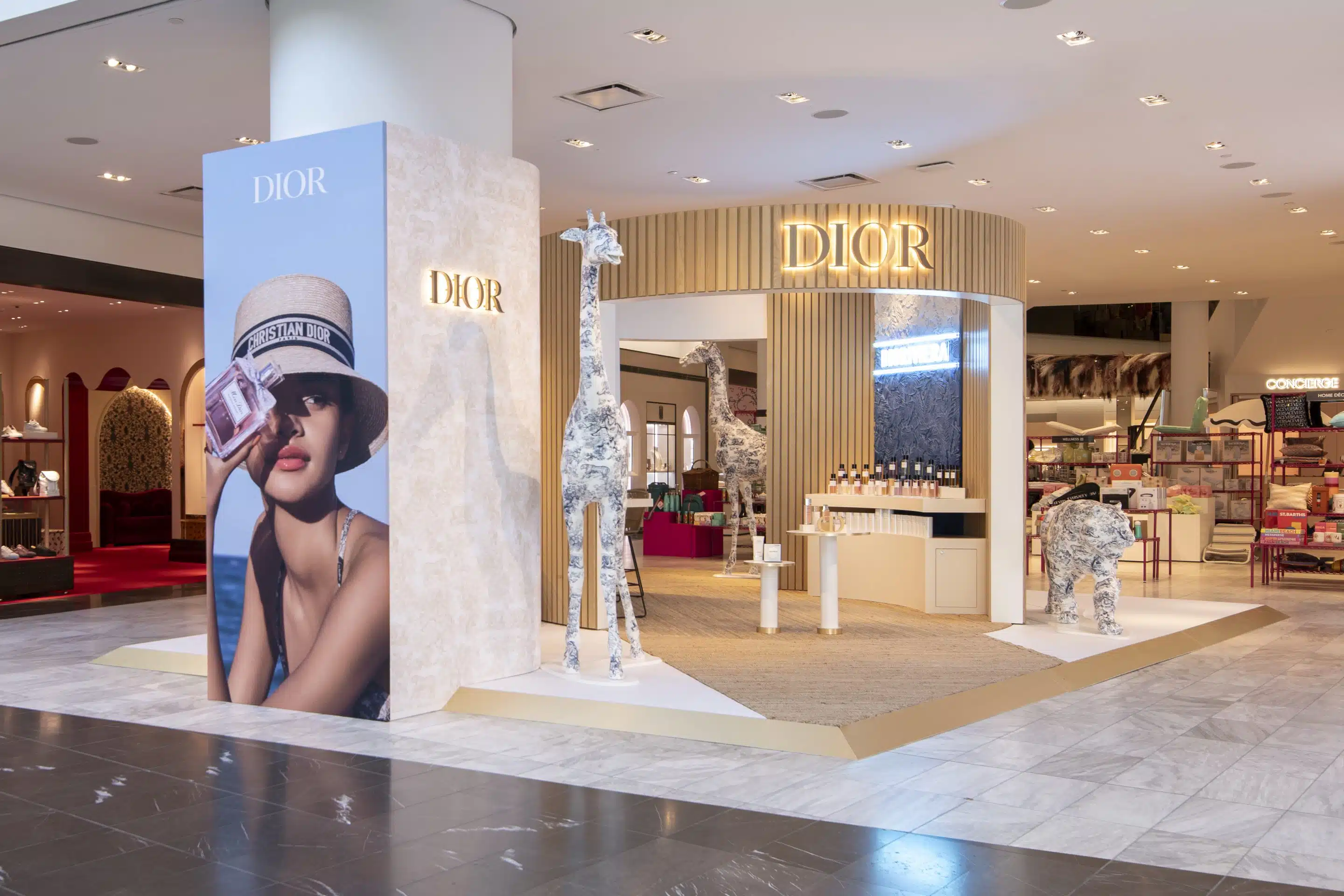
Retail Fixtures
A retail store fixture refers to any specialized piece of furniture, display, or structure designed for the purpose of showcasing and organizing merchandise within a retail environment. These fixtures play a crucial role in the overall layout, presentation, and functionality of a store. Retail store fixtures are not only practical tools for product display but are also integral elements in creating a visually appealing and organized shopping experience.
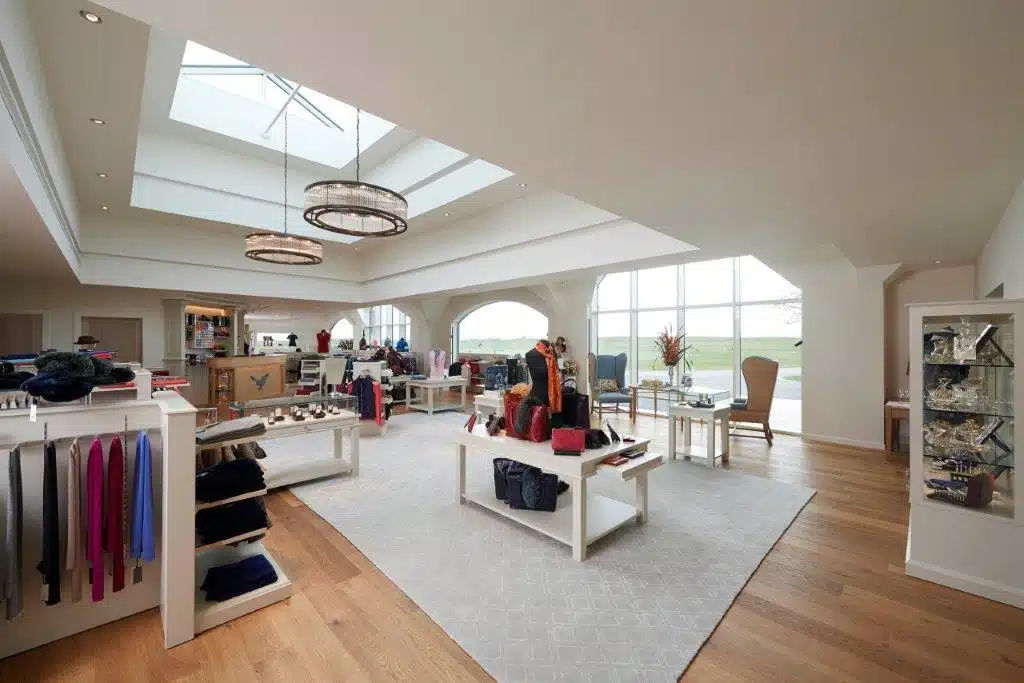
Retail Environment
Retail environment design is a multidisciplinary approach to creating and shaping the physical and visual aspects of a retail space to enhance the overall shopping experience for customers. It involves a careful consideration of various elements, including layout, architecture, interior design, lighting, signage, and the strategic placement of retail fixtures. The goal is to create an environment that not only reflects the brand identity but also encourages customers to engage with the products, make purchases, and enjoy their time within the store and custom store display fixtures.
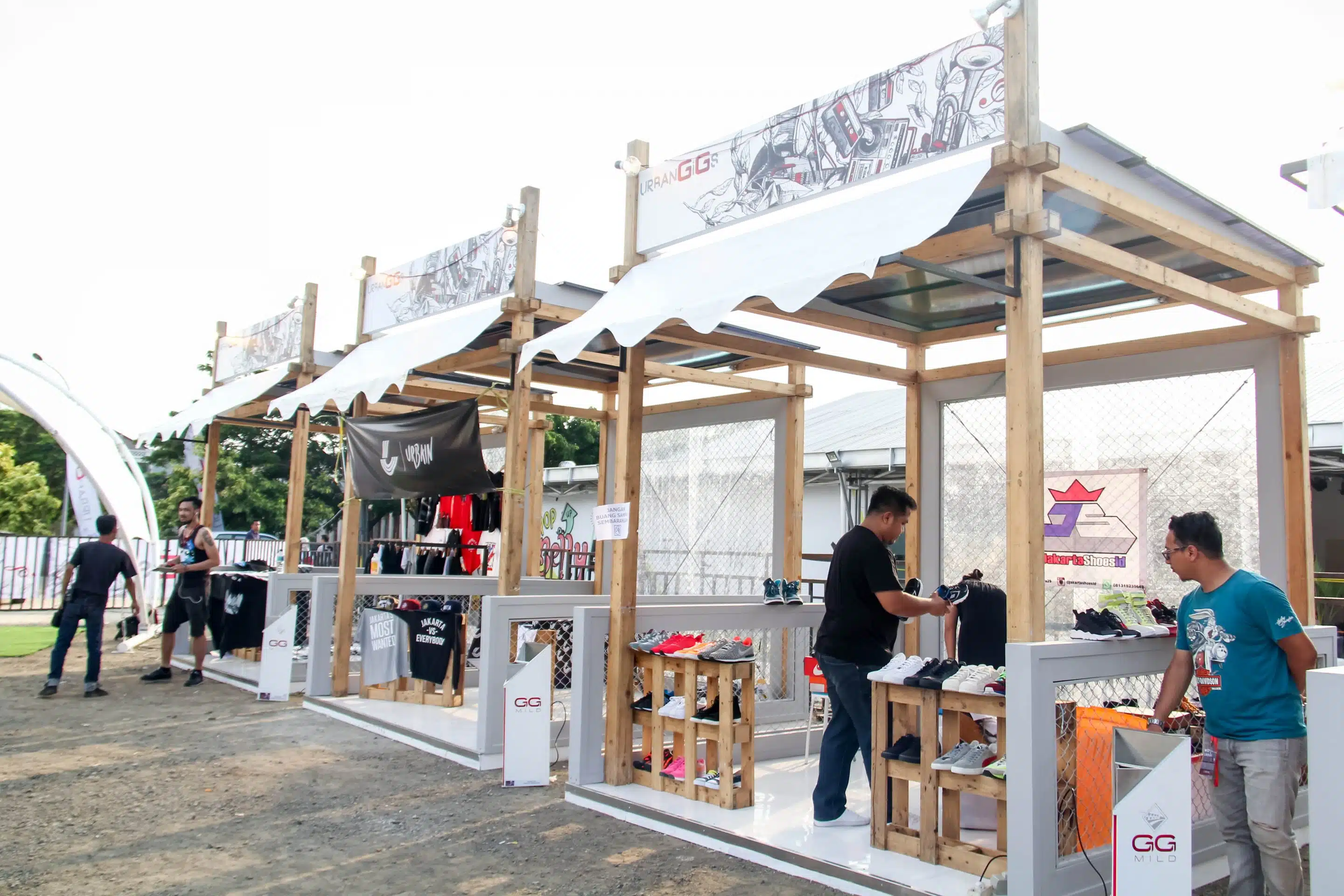
Custom Retail Displays
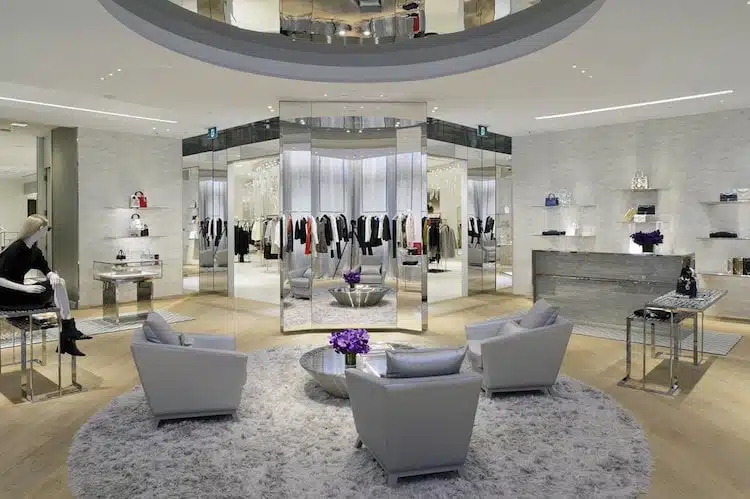
Impact In-Store Sales
Store displays play a crucial role in influencing store sales through various strategic approaches. Visually appealing displays attract customers, encouraging engagement and increasing the likelihood of purchases. Effective product visibility and highlighting draw attention to specific items, contributing to informed decision-making by customers. Additionally, displays are instrumental in cross-selling and upselling opportunities by suggesting complementary or upgraded products. Well-organized seasonal and promotional displays capitalize on customer interest in limited-time offers, while strategically placed displays near checkout counters prompt impulse purchases. Displays also contribute to successful new product launches by generating excitement and interest. Interactive displays enhance the shopping experience, providing additional information and engagement that can lead to increased sales. Moreover, efficient merchandising, consistent branding, and the creation of product stories contribute to a positive customer perception, ultimately influencing purchasing decisions.
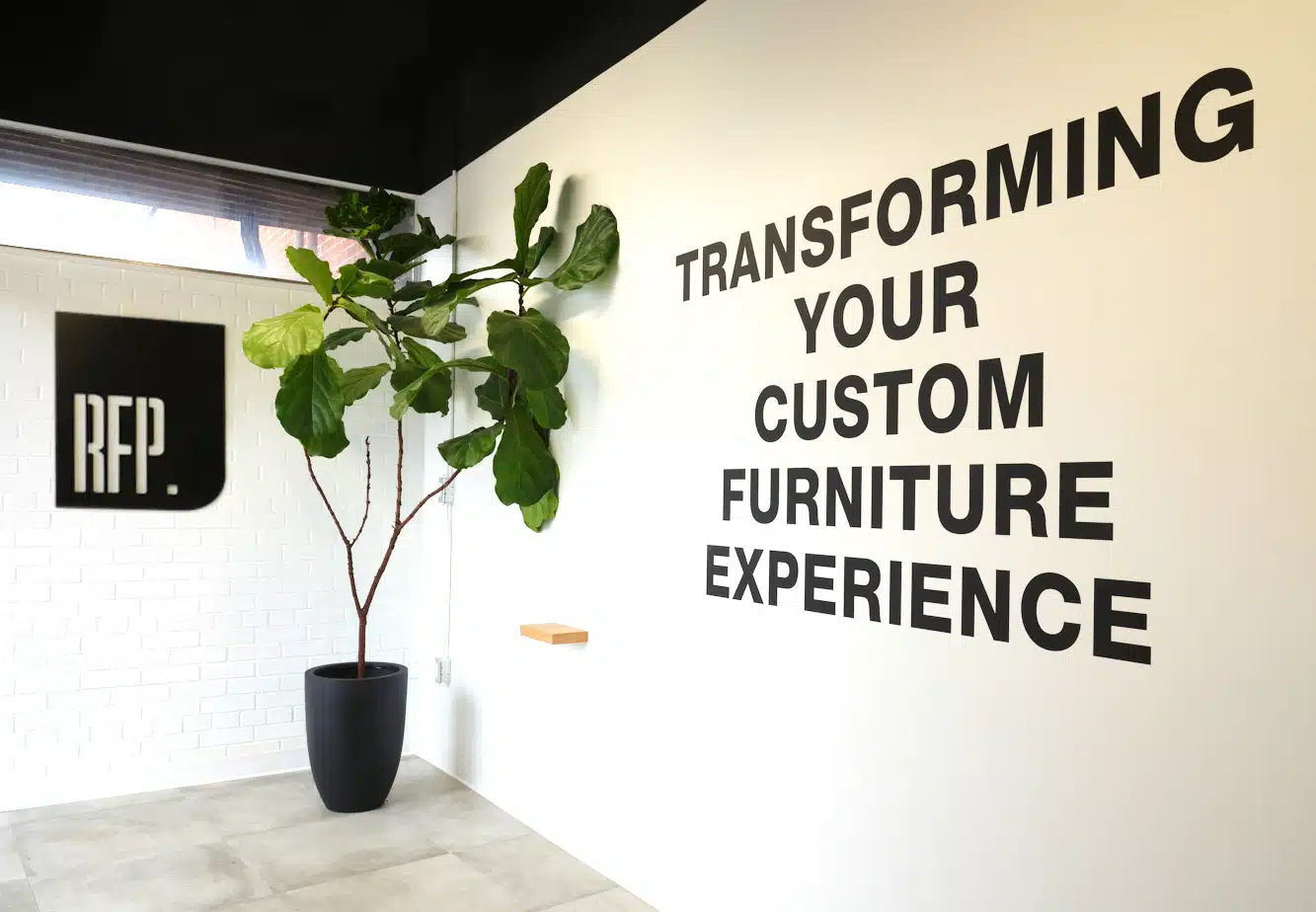
Wall Systems
Wall systems serve as indispensable elements in retail store design, offering a myriad of benefits that enhance the overall shopping experience and contribute to the success of businesses. These systems efficiently utilize vertical space, allowing for a well-organized and visually appealing store layout. Versatility in merchandising is achieved through various components like shelving units and hanging racks, accommodating different product categories and promotions. Walls become dynamic canvases for visual merchandising strategies, enabling retailers to create impactful displays and guide customers through the store effectively. Customizable features allow for brand alignment, incorporating specific colors, graphics, and signage to reinforce a cohesive brand identity. Walls excel in highlighting featured or seasonal products, driving attention to key merchandise. Integrating interactive and digital displays on walls engages customers, providing information and enhancing the shopping experience.
What are store display fixtures?
Store display fixtures or custom store display fixtures are specialized furniture and structures designed to showcase and organize merchandise within a retail environment. These fixtures serve various purposes, including enhancing the visual appeal of products, optimizing space utilization, and influencing customer behavior. Common types of store display fixtures include:
- Shelving Units: Adjustable shelves and racks for displaying a variety of products in an organized manner.
- Countertop Displays: Compact fixtures designed to showcase smaller items, usually placed near the checkout or other high-traffic areas.
- Mannequins: Lifelike figures used to display clothing and accessories, helping customers visualize how products look when worn.
- Display Cases: Enclosed glass or acrylic cases for showcasing valuable or delicate items while providing security.
- Gridwall and Slatwall Systems: Wall-mounted grids or slats with various accessories like hooks and shelves for flexible product displays.
- End Caps: Displays at the end of store aisles to highlight featured products or promotions and encourage impulse purchases.
- Gondola Shelving: Freestanding shelving units often found in the middle of the store aisles, providing a versatile platform for product displays.
- Hanging Racks: Suspended fixtures for displaying clothing or other items that benefit from being hung.
- Display Tables: Tables strategically placed within the store to showcase featured products or promotions.
- Signage and Graphics: Visual elements like banners, posters, and signs that complement displays and convey important information to customers.
Effective store display fixtures & custom store display fixtures are crucial for creating an inviting and organized shopping environment, capturing the attention of customers, and influencing their purchasing decisions. Retailers often customize these fixtures based on their brand identity, target audience, and the types of products they sell.
What are the guidelines for the selection of store fixtures?
Selecting the right store fixtures is crucial for creating an effective and appealing retail space. Here are some guidelines to consider when choosing store fixtures:
-
Understand Your Merchandise:
- Analyze the types of products you sell and their specific display requirements.
- Consider the size, shape, and weight of your merchandise to ensure fixtures can support and showcase items effectively.
-
Consider Your Store Layout:
- Evaluate your store’s layout and traffic flow to determine the best placement for fixtures.
- Ensure that fixtures do not obstruct pathways and that they encourage a natural shopping progression.
-
Brand Consistency:
- Select fixtures that align with your brand image and overall store aesthetic.
- Maintain a consistent style, color scheme, and design across all fixtures for a cohesive look.
-
Flexibility and Versatility:
- Choose fixtures that can be easily reconfigured or repurposed to accommodate changing merchandise and seasonal displays.
- Opt for modular or adjustable fixtures that provide flexibility as your product offerings evolve.
-
Durability and Quality:
- Invest in high-quality fixtures that can withstand regular use and the weight of your products.
- Consider the durability of materials, finishes, and construction to ensure longevity.
-
Visibility and Accessibility:
- Ensure that products are easily visible and accessible to customers.
- Avoid overcrowding displays to allow customers to browse comfortably without feeling overwhelmed.
-
Lighting:
- Incorporate proper lighting to highlight featured products and create an inviting atmosphere.
- Consider the color temperature of lighting to enhance the visual appeal of merchandise.
-
Space Optimization:
- Maximize the use of vertical space with shelving and displays to optimize the available selling space.
- Group related items together to create visually appealing product zones.
-
Budget Considerations:
- Establish a budget for store fixtures and seek a balance between quality and cost.
- Prioritize key areas where impactful displays will have the most influence on customer engagement.
-
Compliance and Safety:
- Ensure that fixtures comply with safety regulations and are stable and secure.
- Consider any specific safety requirements for certain types of merchandise.
-
Stay Updated on Trends:
- Keep abreast of retail design trends to incorporate fresh and modern elements into your store fixtures.
- Regularly update fixtures to maintain a contemporary and relevant retail environment.
By carefully considering these guidelines, you can select store fixtures that not only showcase your merchandise effectively but also contribute to a positive and engaging shopping experience for your customers.
How do store fixtures benefit retail businesses?
Store fixtures offer a range of benefits to retail businesses, contributing to the overall success and effectiveness of the retail environment. Here are some key advantages:
-
Enhanced Visual Merchandising:
- Store fixtures provide a structured and organized way to display merchandise, creating visually appealing presentations that attract customers and encourage browsing.
-
Improved Product Visibility:
- Well-designed fixtures ensure that products are prominently displayed and easily visible to customers, increasing the likelihood of product discovery and purchase.
-
Increased Sales and Revenue:
- Effective use of store fixtures can influence customer behavior, prompting impulse purchases and increasing the average transaction value, ultimately boosting sales and revenue.
-
Brand Image and Identity:
- Customized fixtures contribute to the overall brand image and identity of the store, helping to reinforce the brand’s message and values.
-
Optimized Space Utilization:
- Store fixtures help retailers make efficient use of available space by organizing and displaying products in a way that maximizes both floor and vertical space.
-
Flexibility for Seasonal Changes:
- Modular and adaptable fixtures allow retailers to easily update displays to accommodate seasonal merchandise, sales promotions, or new product launches.
-
Customer Engagement:
- Engaging and well-designed fixtures can captivate the attention of customers, encouraging them to explore the store and spend more time browsing.
-
Improved Customer Experience:
- Easy-to-navigate store layouts, well-organized displays, and strategically placed fixtures contribute to a positive and enjoyable shopping experience for customers.
-
Brand Differentiation:
- Unique and innovative fixtures help distinguish a store from competitors, making it memorable for customers and encouraging repeat visits.
-
Highlighting Featured Products:
- Store fixtures are instrumental in spotlighting specific products, promotions, or featured items, drawing attention to key offerings and driving interest.
-
Operational Efficiency:
- Efficiently designed fixtures make it easier for staff to restock merchandise, maintain displays, and keep the store tidy, contributing to operational efficiency.
-
Increased Perceived Value:
- Thoughtfully designed fixtures can elevate the perceived value of products, making them more appealing to customers and justifying premium pricing.
-
Customer Convenience:
- Fixtures contribute to a convenient shopping experience by providing accessible and well-organized product displays, minimizing customer frustration.
-
Showcasing Merchandise Themes:
- Fixtures allow retailers to create thematic displays that align with seasons, holidays, or specific marketing campaigns, enhancing the overall visual impact of the store.
In summary, store fixtures play a crucial role in shaping the retail environment, influencing customer behavior, and contributing to the success and profitability of retail businesses. A well-planned and aesthetically pleasing fixture strategy can make a significant difference in attracting and retaining customers.
What type of store fixtures are available?
A variety of store fixtures are available to meet the diverse needs of retailers, accommodating different types of merchandise and enhancing the overall shopping experience. Here are some common types of store fixtures:
-
Shelving Units:
- Wall-mounted shelves
- Gondola shelving (freestanding shelving units often found in the middle of store aisles)
- Slatwall shelving (utilizing slotted panels for flexible display options)
- Gridwall shelving (similar to slatwall but using grid panels)
-
Countertop Displays:
- Display cases
- Spinner racks
- Small shelves or stands placed on countertops
-
Mannequins:
- Full-body mannequins
- Torso and bust forms
- Headless or abstract mannequins
-
Display Cases:
- Glass or acrylic cases for showcasing valuable or delicate items
- Jewelry display cases
- Museum-style display cases
-
Hanging Racks:
- Clothing racks for hanging garments
- Pegboard hooks for hanging merchandise
- Ceiling-mounted hanging racks
-
Tables and Platforms:
- Display tables
- Nesting tables (stackable for versatility)
- Pedestals and platforms for highlighting specific items
-
Signage and Graphics:
- Banners and flags
- A-frame signs
- Posters and graphics for promotional messaging
-
Mirrors:
- Full-length mirrors
- Fitting room mirrors
- Mirrors incorporated into display fixtures
-
Cabinets and Drawers:
- Storage cabinets for back-of-house organization
- Cash wraps with integrated storage
- Drawer units for merchandise storage
-
Racks and Rails:
- Clothing racks for hanging garments
- Round racks for circular merchandise displays
- Spiral racks for a unique display style
-
Slatwall and Gridwall Systems:
- Wall-mounted systems with slats or grids for attaching various accessories like hooks and shelves
-
Freestanding Displays:
- Floor-standing display units
- Rotating displays
- Merchandise towers
-
Technology Integration:
- Interactive displays
- Digital signage and screens
- Charging stations
-
Lighting Fixtures:
- Track lighting
- Spotlights
- LED strips integrated into fixtures
-
Furniture and Seating:
- Fitting rooms with mirrors
- Seating areas for customers
- Benches and stools for trying on shoes
-
Easels and Stands:
- Signage easels
- Poster stands
- Menu stands for showcasing prices or product information
-
Modular and Custom Fixtures:
- Custom-designed fixtures tailored to specific needs
- Modular systems that can be reconfigured based on changing requirements
Choosing the right combination of these store fixtures depends on the type of merchandise, store layout, and overall design aesthetic that a retailer wants to achieve. It’s common for retailers to use a mix of these fixtures to create a dynamic and visually appealing shopping environment.
What type of store fixtures are available?
A variety of store fixtures are available to meet the diverse needs of retailers, accommodating different types of merchandise and enhancing the overall shopping experience. Here are some common types of store fixtures:
-
Shelving Units:
- Wall-mounted shelves
- Gondola shelving (freestanding shelving units often found in the middle of store aisles)
- Slatwall shelving (utilizing slotted panels for flexible display options)
- Gridwall shelving (similar to slatwall but using grid panels)
-
Countertop Displays:
- Display cases
- Spinner racks
- Small shelves or stands placed on countertops
-
Mannequins:
- Full-body mannequins
- Torso and bust forms
- Headless or abstract mannequins
-
Display Cases:
- Glass or acrylic cases for showcasing valuable or delicate items
- Jewelry display cases
- Museum-style display cases
-
Hanging Racks:
- Clothing racks for hanging garments
- Pegboard hooks for hanging merchandise
- Ceiling-mounted hanging racks
-
Tables and Platforms:
- Display tables
- Nesting tables (stackable for versatility)
- Pedestals and platforms for highlighting specific items
-
Signage and Graphics:
- Banners and flags
- A-frame signs
- Posters and graphics for promotional messaging
-
Mirrors:
- Full-length mirrors
- Fitting room mirrors
- Mirrors incorporated into display fixtures
-
Cabinets and Drawers:
- Storage cabinets for back-of-house organization
- Cash wraps with integrated storage
- Drawer units for merchandise storage
-
Racks and Rails:
- Clothing racks for hanging garments
- Round racks for circular merchandise displays
- Spiral racks for a unique display style
-
Slatwall and Gridwall Systems:
- Wall-mounted systems with slats or grids for attaching various accessories like hooks and shelves
-
Freestanding Displays:
- Floor-standing display units
- Rotating displays
- Merchandise towers
-
Technology Integration:
- Interactive displays
- Digital signage and screens
- Charging stations
-
Lighting Fixtures:
- Track lighting
- Spotlights
- LED strips integrated into fixtures
-
Furniture and Seating:
- Fitting rooms with mirrors
- Seating areas for customers
- Benches and stools for trying on shoes
-
Easels and Stands:
- Signage easels
- Poster stands
- Menu stands for showcasing prices or product information
-
Modular and Custom Fixtures:
- Custom-designed fixtures tailored to specific needs
- Modular systems that can be reconfigured based on changing requirements
Choosing the right combination of these store fixtures depends on the type of merchandise, store layout, and overall design aesthetic that a retailer wants to achieve. It’s common for retailers to use a mix of these fixtures to create a dynamic and visually appealing shopping environment.
How can store fixtures improve the customer experience?
Store fixtures & custom store display fixtures play a crucial role in shaping the overall customer experience within a retail environment. When strategically designed and placed, fixtures can enhance the shopping journey, making it more enjoyable and satisfying for customers. Here are ways in which store fixtures contribute to an improved customer experience:
- Visual Appeal:
- Attractive and well-designed fixtures create an aesthetically pleasing environment that captures the attention of customers and makes the store more inviting.
- Easy Navigation:
- Thoughtful placement of fixtures helps in organizing merchandise logically, making it easy for customers to navigate the store and find what they are looking for without frustration.
- Product Discovery:
- Effective use of fixtures highlights specific products, encourages exploration, and promotes the discovery of new items, leading to increased sales.
- Interactive Displays:
- Interactive fixtures, such as touchscreens or digital displays, engage customers and provide additional information about products, promotions, or the brand, enhancing the overall shopping experience.
- Comfortable Browsing:
- Well-spaced fixtures prevent overcrowding, allowing customers to browse comfortably and move freely within the store.
- Inspiration and Aspiration:
- Creative displays and well-styled fixtures inspire customers by showcasing products in a way that helps them visualize how items can be used or worn, sparking a desire to purchase.
- Tactile Experience:
- Fixtures that encourage customers to touch and interact with merchandise create a tactile experience, fostering a stronger connection with the products.
- Efficient Checkout Process:
- Thoughtful placement of fixtures, like impulse-buy displays near the checkout, can enhance the checkout experience by prompting additional purchases and reducing perceived wait times.
- Branding Reinforcement:
- Consistent use of fixtures in line with the brand’s identity reinforces the brand image, making the overall shopping experience more memorable for customers.
- Seasonal and Theme Integration:
- Adjusting fixtures based on seasons or specific themes adds a dynamic and ever-changing element to the store, keeping the customer experience fresh and exciting.
- Accessibility:
- Well-designed fixtures ensure that products are easily accessible, even for customers with mobility challenges, creating an inclusive shopping environment.
- Well-lit Displays:
- Proper lighting integrated into fixtures highlights products and enhances their visual appeal, contributing to a positive shopping atmosphere.
- Efficient Restocking:
- Fixtures designed with easy restocking in mind contribute to a seamless shopping experience by ensuring that products are consistently available and neatly presented.
- Personalized Displays:
- Tailoring displays to specific customer demographics or preferences creates a more personalized and relevant shopping experience.
- Clear Merchandise Information:
- Fixtures with integrated signage and product information help customers make informed decisions, contributing to a more confident and enjoyable shopping experience.
By paying attention to these aspects and considering the overall layout and design of the store, retailers can leverage store fixtures to create an environment that not only showcases products but also enhances the overall satisfaction and engagement of customers.
How often should store fixtures be cleaned and maintained?
The frequency of replacing store display fixtures can vary based on several factors, including the type of fixtures, the quality of materials, changes in merchandise, and evolving retail trends. Here are some general guidelines, but it’s essential to consider your specific business context:
-
Merchandise Rotation and Seasonal Changes:
- If your store frequently introduces new merchandise or undergoes seasonal changes, consider updating or rotating fixtures to accommodate the evolving product lineup. This could involve replacing or reconfiguring displays to keep the presentation fresh and aligned with the latest offerings.
-
Fashion and Trend Cycles:
- In industries where trends change rapidly, such as fashion or electronics, updating fixtures to reflect current styles and preferences may be more frequent. This helps maintain a contemporary and attractive store environment.
-
Wear and Tear:
- Regularly assess the condition of fixtures for signs of wear and tear. Damaged or worn-out fixtures can negatively impact the overall aesthetic and functionality of the store. Replace fixtures that are beyond repair or no longer present products effectively.
-
Brand Image and Identity:
- If there are changes to your brand image, logo, or overall store aesthetic, updating fixtures to align with the new branding may be necessary. Consistency in design contributes to a cohesive and memorable customer experience.
-
Technology Upgrades:
- If your store uses technology-integrated fixtures, such as digital displays or interactive kiosks, consider updates to stay current with technological advancements. This could involve replacing outdated equipment to maintain a modern and engaging shopping environment.
-
Store Remodels or Renovations:
- During store remodels or renovations, it’s common to update or replace fixtures to reflect the new layout, design, or theme. This is an opportunity to enhance the overall look and functionality of the store.
-
Customer Feedback:
- Pay attention to customer feedback regarding the store layout and displays. If customers express dissatisfaction or if there are consistent complaints, it might be an indication that certain fixtures need to be replaced or reconfigured.
-
Competitive Landscape:
- Stay aware of the fixtures and displays used by competitors. If other retailers in your industry are adopting new and innovative display solutions, it may be worthwhile to assess whether your fixtures need updating to remain competitive.
-
Long-Term Planning:
- Develop a long-term fixture replacement plan based on the expected lifespan of the materials used and the durability of the fixtures. This proactive approach can help prevent unexpected issues and ensure a consistently appealing store environment.
It’s crucial to strike a balance between maintaining a fresh and inviting atmosphere for customers and managing costs. Regularly evaluate the condition of your store display fixtures and make strategic decisions about replacements based on your business goals and the evolving needs of your retail space.
